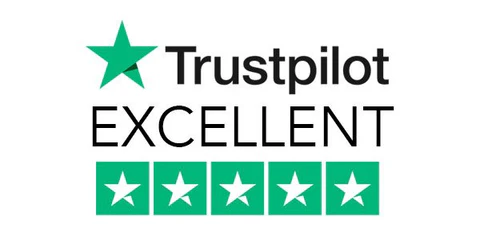Google uses over 200 ranking factors to determine where to rank pages in its search results. One important ranking factor is trust, which takes time for new websites to build. This article reviews the research on how Google calculates trust for new websites, the main trust signals used, and how long it typically takes for new sites to build enough trust to rank well in Google search. Factors analyzed include domain age, quality content, natural links, positive user engagement signals, website performance, and following Google’s quality guidelines. Overall the research shows it can take 6-18 months for a new website to build sufficient trust signals to rank competitively for valuable keywords, but excellent content and marketing efforts can accelerate this.

Introduction
Search engine optimization (SEO) is vital for driving traffic from Google to websites. Google handles over 3.5 billion searches per day, making it the most dominant search engine globally with 92% market share [1]. With so much search volume and competition, new websites face a considerable challenge ranking well in Google search results against established sites.
One of the key ranking factors new websites need to earn is Google’s trust [2]. Google wants to provide the most relevant and high quality search results, which means favoring authoritative, trustworthy websites over unreliable or manipulative sites. Building Google’s trust takes time and effort for any new website.
This article reviews academic research and industry expertise on how Google calculates trust and how long it takes for new websites to build that trust. First we examine how Google measures website trust. Next we look at the main trust signals Google uses, including domain age, content quality, links, engagement metrics, website performance, and Google guideline compliance. We then analyze typical timeframes reported for new sites to build sufficient trust. The article concludes with recommendations on how new websites can accelerate developing Google’s trust.
How Google Measures Website Trust

Google does not publish exactly how they measure website trustworthiness for their search algorithm. However, through patents, research papers, and insights from search engine optimization experts who study Google closely, we can understand the main principles.
Google’s trust algorithm does not rely on a single metric, but rather combines multiple trust signals and lookups to infer each site’s level of expertise, authoritativeness, and trustworthiness [2][3]. Google computes a complex trust score for each website that determines the degree of trust the Google search algorithm will place in that site.
Some of the main inputs Google uses to calculate trust include [4]:
- Domain age – Older websites tend to be viewed as more established and trustworthy. The domain registration date is a factor.
- Content quality – Well researched, accurate, in-depth content demonstrates expertise. Low quality or copied content removes trust.
- Quantity of content – Websites with extensive unique quality content are trusted as an authority.
- Natural links – Trusted sites linking to a website helps confer trustworthiness.
- Positive engagement – Visitors engaging positively with a site through clicks, time on site, social shares.
- Low engagement – Low bounce rates, low percentages leaving a page right away.
- Performance – Fast loading, mobile-friendly sites show competence.
- Guideline compliance – Adhering to Google’s quality guidelines avoids penalties.
Google needs to be able to automatically evaluate billions of webpages, so their trust algorithms rely heavily on quantifiable metrics like links and engagement signals. Content factors are evaluated using machine learning analysis of page text, semantic search quality, and natural language processing techniques [5]. The various trust signals get compiled into an aggregate trust score for the site.
We will now examine each of these main trust factors and signals in more detail.
Trust Factors Analyzed by Google
Domain Registration Age

The length of time since a website’s domain name was first registered and made live on the internet is a simple signal but still carries some weight in Google’s trust analysis [6]. Google has patent filings describing using the domain registration date as one trust factor [7].
In their public Search Quality Rater Guidelines, Google states their raters should consider domain age as one positive reputation indicator [8]. For certain types of sites like medical or financial advice websites, the guidelines recommend raters be skeptical of sites with brand-new domains.
Industry experts observe that domains aged less than 6 months tend to struggle with trust and ranking well in competitive keywords [9]. Domains over 2 years old are considered more established and trustworthy. However, Google has downplayed domain age as a factor, stating it has only a small influence on search rankings [10]. For content-rich sites producing quality content, Google says the age of the domain itself does not matter that much these days.
So while new domains face slightly more scrutiny and skepticism from Google’s algorithms, domain age by itself is not decisive. It is just one factor among many that combine to determine levels of trust and authority.
Quality and Quantity of Content

The quality and uniqueness of a website’s content is an important factor that Google analyzes to determine subject matter expertise and authority. Higher-quality content demonstrates greater authority on a topic than poorly written or copied content. Websites that publish extensive, useful information on a topic tend to be viewed as more authoritative and trustworthy. Various Google patents describe algorithms for automatically estimating the quality and uniqueness of website content [11].
Google wants to surface the most comprehensive, accurate resources in its top search results. Its algorithms evaluate page content using multiple mechanisms:
- Readability – Writing quality, grammar, punctuation. Good readability signals expertise.
- Semantic search analysis – Relevance of page content to searched keywords and meaning.
- Page depth – Thorough, information-rich pages covering details of a topic.
- Media elements – Use of images, videos and other formats to explain topics.
- Originality – Unique content creation versus copying text from other sites.
- References – Citing sources and references supports accuracy.
- Topic breadth/depth – sites with expansive content on a subject tend to be authoritative.
Producing comprehensive, high quality, useful content that clearly communicates information on topics google perceives as valuable will help build trust and authority. Thin content with lots of ads or affiliate links tends to be distrusted.
Natural Link Profile Analysis
The number and quality of sites linking to a particular website, known as backlinks or inbound links, has long been understood as one of the strongest trust signals for Google [12][13]. A site that has earned links from many other established, trusted sites tends to be viewed as more reputable by Google. Links act as votes of confidence. Google’s algorithms closely analyze the link graph between websites.

However, not all links are treated equally in Google’s analysis. Some low-quality links can actually hurt a site. Google is looking for sites that have earned large numbers of natural links from diverse quality sites relevant to the topic [14]. Some key link factors include:
- Link source authority – Links from highly authoritative, trusted sites are more influential.
- Anchor text diversity – Natural unique anchor texts help. Repeated or manipulative anchor texts can trigger penalties.
- Relevance – Links from topically relevant, related sites matter more than irrelevant sites.
- Link velocity – Natural gradual link accumulation is preferable to rapid bursts.
- Low spam links – Sites with excessive low-quality links may be distrusted.
Overall a natural, diverse, and gradually expanding external link profile from relevant quality sites demonstrates popularity, authority, and trustworthiness to Google. New sites with few quality links understandably struggle against established sites with abundant relevant links.
User Engagement Metrics
How visitors engage with a website also factors into Google’s trust analysis in multiple ways. Google has access to large volumes of user engagement data that can infer trust and authority. Some key metrics Google is believed to analyze include [15]:
- Click-through rate – Are searchers clicking on the site from Google results?
- Bounce rate – Do visitors leave immediately or browse other pages?
- Pages/session – How many pages does the average visitor view?
- Session duration – How long do visitors spend actively engaging?
- Social shares – How often is content socially shared?
Positive user engagement signals demonstrate relevance, usefulness, and satisfaction. Browsing several pages shows users found the expected information. Low bounce rates and longer session times indicate engaged visitors. Social shares also evidence trust and popularity. Negative user engagement patterns like excessive bounce rates may decrease trust. Basically, Google looks for signs of happy searchers.
Website Performance
The technical performance and responsiveness of a website also factor into Google’s trust measurements [5]. Fast page speed and uptime correlate with higher quality and confidence. Key performance elements include:
- Page speed – Page load times on mobile and desktop. Faster is better.
- Mobile-friendliness – Mobile-optimized design and content.
- Site architecture – Clear IA and navigation. Easy to crawl and index.
- Uptime/Availability – Consistent site availability, minimal errors or downtime.
- Security – Use of HTTPS and lack of threats or malware.
Poor website performance due to slow servers or unoptimized pages can hurt user experience and damage trust. Competent webmasters also tend to follow best practices for site architecture, crawlability and technical SEO.
Adherence to Quality Guidelines
The final factor we’ll examine is whether sites adhere to Google’s quality guidelines and avoid actions causing penalties. Google publishes strict evaluator guidelines that outline characteristics of low quality sites versus high quality, trustworthy sites [8]. Some examples:
- Avoiding automated generated content – Unique human authored content is preferred.
- Preventing sneaky redirects – Tricking users to collect clicks or traffic.
- Skipping misleading titles – Accurate titles that reflect page content.
- Omitting disruptive ads – Ads should not interrupt content.
- Excluding harmful content – No malware, hacking, illegal activity.
Webmasters who invest in quality content, user experience, and ethical practices tend to achieve better results. Sites perceived as manipulative blackhat techniques or trying to take advantage of users and Google are demoted. One recent Google algorithm named the Helpful Content Update was expressly designed to boost advice, how-to, and expertise content while decreasing low quality or shallow content [16]. Publishing truly helpful information builds trust.
The range of trust factors Google analyzes gives a sense of the comprehensiveness and complexity of their efforts. No single trust signal dominates. By combining millions of data points across these lenses of website quality and authority, Google aims to surface the most trustworthy results. Next we look at typical timeframes for earning Google’s trust.
Timeframes for Building Trust with Google
Given the importance of trust for ranking highly on Google, a key question is: how long does it take for a brand new website to build enough trust signals to compete with established sites?
Unfortunately, no definitive answer exists, as Google does not reveal precise trust score algorithms or thresholds. The time to build trust varies based on factors like site niche, content quality, and link-building efforts. However, based on studies of Google ranking factors and surveys of SEO practitioners, we can estimate the approximate time periods needed.
Domain Age
As covered earlier, domain registration age is one minor trust factor, but certainly does not dictate rankings alone. Still most experts agree a brand new domain with no history has initial trust handicaps. Verisign reported that websites tend to obtain the best search engine visibility after about 2 years [17]. One study found domains aged less than 6 months lagged in competitive rankings [9].
Patience is advised when launching a new domain. Trying to rapidly accelerate with artificial links or tricks to appear established often backfires. Depending on content quality and marketing, it may take 6-12 months for a new domain to build adequate trust and overcome initial domain age bias.
Quality Content Creation
Publishing high quality, useful content is vital for Google gaining confidence in new websites. But crafting truly valuable, authoritative content takes significant time and effort. Relatively sparse or mediocre content will require longer to gain recognition. Experts recommend focusing early on creating pillar content with depth.
One extensive study of over 800,000 Google search results found pages ranking on the first page had 1,890 words on average [18]. Producing just 10-20 authoritative pillar articles could take 3-6 months for a small team. Larger sites may need 50+ in-depth articles covering core topics, likely taking at least 6-12 months to research and write. Impatient websites that hastily publish thin content from freelancers will struggle to establish subject matter expertise.
Natural Link Building
Earning natural links from other quality sites depends greatly on producing content worth linking to. But even for sites with amazing content, links take time to accumulate. Trying to rapidly acquire links through artificial methods tends to trigger Google penalties. Organic links from real site visitors and partnerships are preferred.
One analysis found top ranking sites tend to have over 1,000 referring domains [19]. Another study found 75 natural links from authority sites achieved rankings success [20]. Depending on marketing outreach, useful resources offered, and relevance for partnerships, building this quantity of quality links organically likely takes at least 6-12 months for most websites.
Engagement and Performance Optimization
Earning engagement from real delighted visitors takes time and effort. Sites need enough content volume to provide value before expecting much user engagement. Improving website speed, navigation, and conversions also does not happen instantly but requires technical optimization.
Expecting high volumes of organic traffic immediately after launch is unrealistic. Building an audience and loyal users is a gradual process. Most websites take at least 6-12 months to start demonstrating positive behaviour metrics of engaged, loyal visitors. Optimization to improve key metrics like session duration and bounce rate also takes testing and iteration.
Google Guidelines Adoption
Building expertise on all Google’s quality guidelines and algorithm nuances is another process that takes dedicated time. Common issues like intrusive ads, site architecture problems, flawed titles and metadata, and thin content take discipline to correct. Most sites launch with technical and content issues that limit trust until fixed over the first 6-12 months.
Estimated Timeframe Summary
In summary, most industry experts estimate it takes between 6 and 18 months for a brand new website to build up sufficient trust signals and authority to rank well for valuable keywords in Google search [21][22][23]. While individual sites vary, the following general time periods represent what is typical:
- 0-6 months – New sites struggle with initial trust bias. Focus on quality content, performance, and guidelines.
- 6-12 months – Enough content to attract some links and visitors. Trust improving but still limited.
- 12-18 months – Consistent quality content and marketing pays off with growing trust metrics. Rankings rising.
- 18+ months – Extensive content and strong trust signals enable top rankings against established competitors.
Like any complex system, it simply takes time and consistent effort for websites to demonstrate their value and expertise to Google algorithms. But for sites publishing truly unique and engaging content that fulfills searcher intents, the traffic results can be well worth the wait. Next we suggest methods to accelerate trust building.
Accelerating Trust Building
While pages on a new website may need months to start ranking against established competitors, site owners can employ strategies to speed up trust development:
- Quality over quantity – Focus early efforts on creating pillar content showcasing expertise.
- Natural integration – Organically weave useful links into content to build citations.
- Link outreach – Proactively contact relevant sites to earn links through resources.
- User research – Study your audience’s needs and optimize content accordingly.
- Technical audits – Continuously improve site speed, mobile experience, and architecture.
- Fix issues – Monitor and rapidly resolve any indexing problems or penalties.
- Social promotion – Leverage social media and emails to find audiences for content.
- Monitor analytics – Review reports on a daily and weekly basis to optimize.
- Google Search Console – Add your site to Google’s free service to identify issues.
Building trust and authority takes perseverance, but following search best practices can accelerate progress. Focus on providing the most useful, in-depth content possible on topics that matter to your audience. Earning genuine links through relevance and outreach helps boost credibility. Fix any technical problems on the site. Then monitor analytics religiously to fine-tune efforts and serve user needs.
Conclusion
Google wants to provide users the most authoritative and trustworthy search results possible. To assess website trust, Google employs complex algorithms analyzing multiple factors that take time for new sites to accumulate. These include positive signals of domain age, quality content, natural links, positive engagement, and following Google’s guidelines. Most industry experts find it takes 6 to 18 months for new websites to build sufficient trust metrics and competitive rankings in Google search. While an exact timeframe depends on content volume and marketing, young websites must simply persist creating quality content that fulfills searcher intent. Through an informed long-term approach, new websites can earn Google’s trust and become authoritative resources in their field.
References
- NetMarketShare, Search Engine Market Share. https://www.netmarketshare.com/search-engine-market-share.aspx
- Google, Search Engine Optimization Starter Guide. https://static.googleusercontent.com/media/www.google.com/en//webmasters/docs/search-engine-optimization-starter-guide.pdf
- Moz, Google Algorithm Change History. https://moz.com/google-algorithm-change
- Backlinko, Google Ranking Factors. https://backlinko.com/google-ranking-factors
- Google, How Search Algorithms Work. https://www.google.com/search/howsearchworks/algorithms/
- Google Patent, US7571177B1. https://patents.google.com/patent/US7571177B1/en
- Google Patent, US8060492B2. https://patents.google.com/patent/US8060492B1/en
- Google, Search Quality Rater Guidelines. https://static.googleusercontent.com/media/guidelines.raterhub.com/en//searchqualityevaluatorguidelines.pdf
- Moz, Domain Age and SEO. https://moz.com/
"Because of the Google update, I, like many other blogs, lost a lot of traffic."
Join the Newsletter
Please, subscribe to get our latest content by email.

